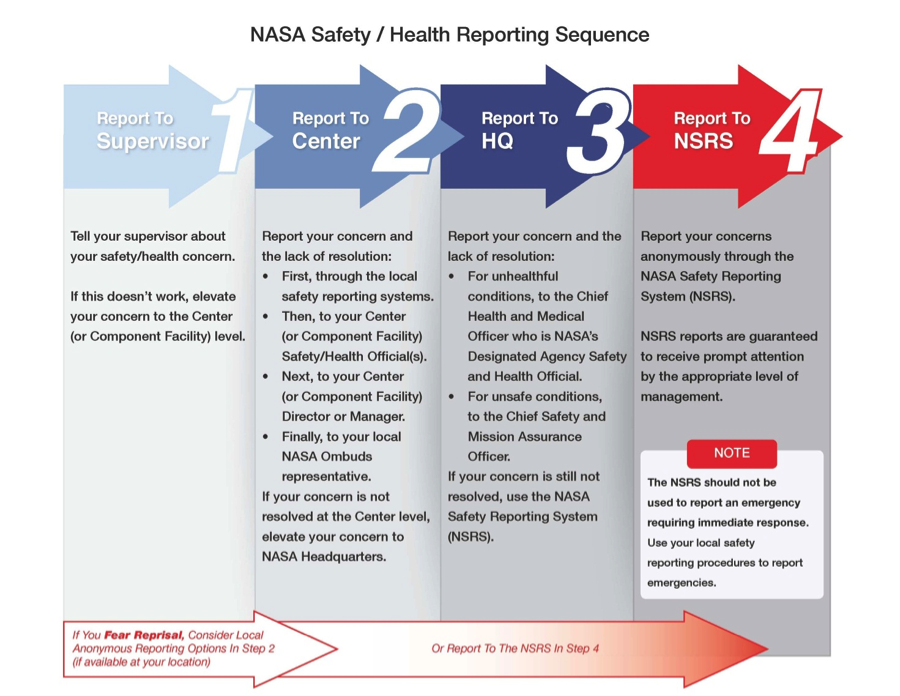NSRS Allows Anonymous Reporting of Hazards and Safety Concerns
The NASA Safety Reporting System (NSRS) is the agency’s anonymous reporting system for hazards and safety concerns. It allows NASA employees and contractors to report hazards and safety concerns to the agency’s upper management without fear of reprisal.
“We take protecting people’s identity to be just as important as solving their issue,” said NSRS Program Manager Eric Raynor.
Commissioned by President Reagan after the Challenger accident in 1986 as a required condition for return to flight and continued flight, NSRS supplements other reporting channels at the supervisor, NASA center or Headquarters level. NSRS is intended to be used if the reporter has already exhausted the lower-level reporting and determines that the report should be elevated, or if the reporter fears reprisal or requires anonymity, in which case lower-level reporting may be bypassed.
Emergencies or criminal activity should not be reported through the NSRS; use your local NASA facility reporting procedures or contact the NASA Inspector General, respectively. Anonymity cannot be guaranteed for reports regarding emergencies or criminal activity.

NASA Safety Reporting Sequence
The NSRS Process
To report a hazard or safety concern via NSRS, download the NSRS reporting form (PDF) from the NSRS site. Print and fill out the form, and then mail it to the Post Office Box listed on the form. In order to be 100 percent anonymous, NSRS only accepts reports through the US Postal Service. The Post Office Box is monitored by a third-party contractor who strips the reports of all identifying information before sending it to Raynor.
NASA’s Chief of Safety and Mission Assurance (SMA) Terry Wilcutt and Deputy Chief of SMA Hal Bell personally read every report, according to Raynor.
“We promise them a fresh look,” he said. “I sit down with [Wilcutt and Bell], and we decide what to do with each case.”
If they deem the hazard critical, Raynor assigns an investigator who reports to him every day until the case is closed. All other non-critical concerns are reported on every 30 days. Cases remain open until all corrective actions have been completed, 9-18 months on average.
The NSRS Refresh
In spring of 2013, NSRS underwent a refresh, transitioning from paper forms to a PDF download. The PDF forms, which comply with the Office of Management and Budget’s revised requirements, ensure that the reporter is using the most current document.
The black, red and yellow posters emblazoned with the message, “If It’s Not Safe, Say So” should be a familiar sight for anyone working at a NASA center or facility.
Updating the poster displays was a challenging and time-consuming effort, but an important step in keeping NSRS accessible, current and compliant. The updated displays include posters and new brochures with quick-response, or QR, codes which link to the NSRS website. It’s just one step in keeping the program successful and operational.
“This is a program that cannot fail, that I cannot allow to fail,” said Raynor. “It really comes down to ethics and integrity… People still have confidence [in NSRS] and are still coming to us with their concerns.”